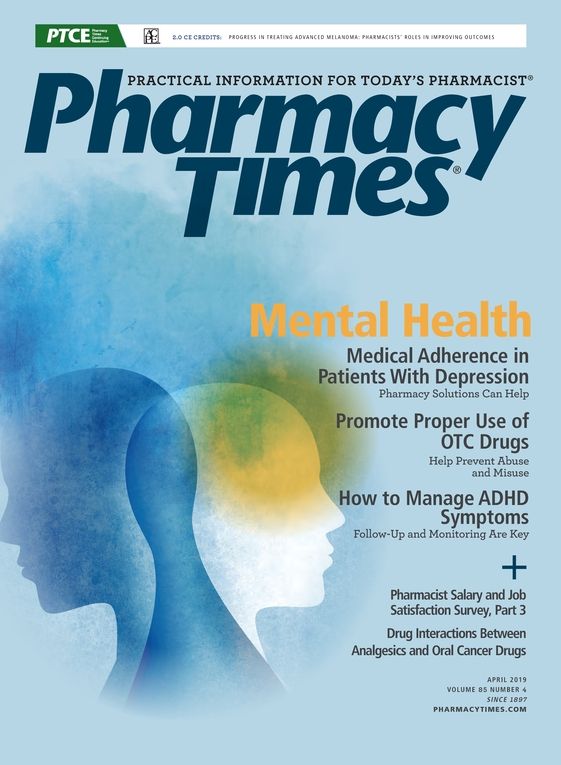Publication
Article
Pharmacy Times
How Early Identification of Community-Acquired Pneumonia Can Lead to Positive Outcomes
Author(s):
Brown Bagging is an essential educational and safety tool for helping treat community-acquired pneumonia.
Participating in a brown-bag check-up session is not only helpful to a patient suffering from a chronic condition, but it also is a useful safety tool for a pharmacist to help assess patient adherence. Brown-bag check-ups can show how well patients understand their conditions, their medications and their purpose, and directions for proper usage. They provide insight into a patient’s life style and quality of care. Brown-bag sessions also provide the opportunity to develop the patient-pharmacist relationship to promote loyalty, trust, medical error prevention and better individualized and comprehensive services.
Community-acquired pneumonia (CAP) is a common and potentially serious illness, particularly in elderly patients and those with significant comorbidities. Prevention and early identification can have a positive impact on infected individuals, healthcare economics and the community.
MT is a 77 year-old female who is a relatively new customer to your pharmacy. She recently moved into an apartment near your pharmacy and is in the process of transitioning her care to her new community. MT retired from an administrative position about six years ago and keeps active. You know from past conversations that she spends a significant amount of time reading, taking local trips with other residents in her senior apartment complex and volunteering at the community center. Today, MT stops in the pharmacy to pick up her late refill prescriptions for simvastatin and tamoxifen. You counsel her on potential misuse and explain the concept behind a brown bag session. While counseling her, you notice that MT seems confused and is coughing a lot. You ask her if everything is okay and MT hesitates before responding. She explains that she has had a terrible headache since last night, and this morning started feeling short of breath. She had trouble reading her thermometer, but feels warm and thinks she has a fever. You tell MT that due to her chronic disease states, you believe she would be an excellent candidate to participate in a medication review. But more urgently, you suggest she make a visit to your neighboring clinic to have her symptoms evaluated. MT is interested in the offered medication review and takes your advice to immediately stop by the clinic. She appreciates the suggestion as her doctor is across town and the onsite clinic is very convenient. MT admits that she cannot afford a costly hospitalization and is very grateful for your concern and help.
MT stops by the pharmacy later that same day after visiting the clinic to tell you she was diagnosed with pneumonia. The nurse practitioner prescribed her an antibiotic and inhaler. MT hands your technician the new scripts to fill along with the bag of all of the medications she is currently taking. MT also asks for your recommendation on OTC therapies to help treat her symptoms. To prepare for your counseling session, you pull up MT’s pharmacy profile so you are able to compare it to what is in her “brown bag:”
- Enalapril 20mg once daily
- Furosemide 40mg once daily every morning
- Simvastatin 40mg once daily every evening
- Esomeprazole 40mg once daily
- Paroxetine 20 mg once daily
- Anastrozole 1 mg once daily
You empty her brown bag and you notice these additional medications:
- OTC Aspirin 81mg enteric coated once daily
- Calcium Carbonate 1000mg once daily
- Adult Multivitamin once daily with iron
- OTC Omeprazole 20mg once daily
- OTC fish oil 4 capsules daily
- Clopidogrel 75 mg once daily, last filled at competitor pharmacy 6 months prior
- Expired albuterol inhaler, date and directions unknown (faded)
As you review the medications for accuracy, you also double-check the dosing and instructions on her new medications to treat her pneumonia. MT confides that she cannot remember the last time she had laboratory work performed to check her cholesterol level. She promises to be proactive in obtaining blood work when she returns to the clinic later in the week to follow-up on her pneumonia treatment. You ask MT about the clopidogrel and she tells you she had three cardiac stents about 9 months ago. You express concern and offer to help her follow-up with her cardiologist across town. MT has been monitoring her blood pressure more frequently at the pharmacy, it appears within range, and has general questions about goals and low-salt diet. MT complains of feeling chronically fatigued despite exercising and keeping her weight down. Maybe it is the pneumonia but she feels it may be something more.
What else would you suggest to her?







